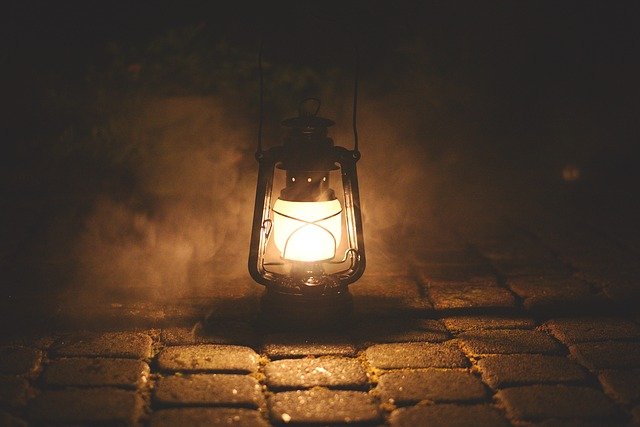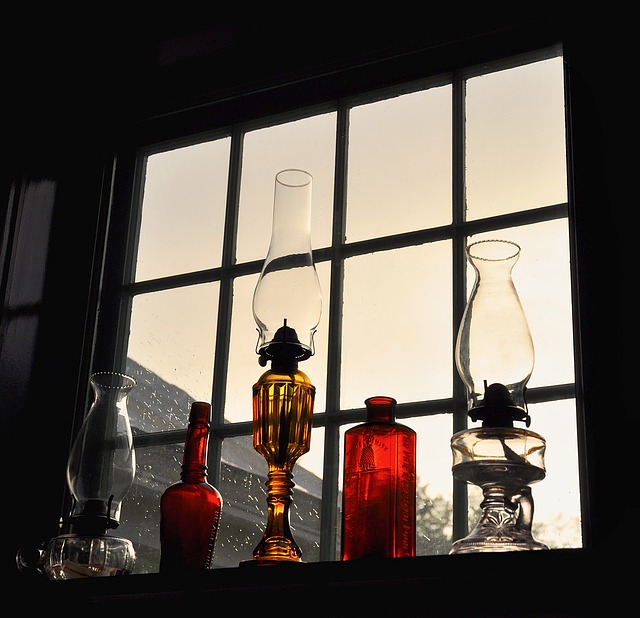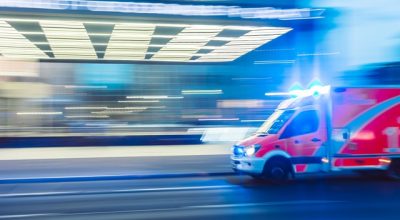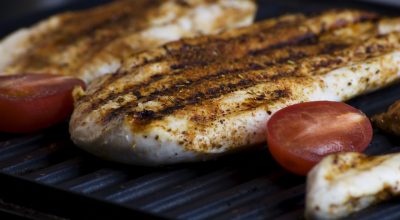When it comes to emergencies you never know when they are ever going to happen. Being prepared for anything that might happen is critical to everyone’s survival.
In these modern times, preparedness is key to not losing some of the basic comforts of life even when emergencies happen. And among the most common emergencies that happen today is losing electricity.
For this post, a discussion on the best oil lamps for emergency preparedness shall be presented. But before that is tackled thoroughly, here are some considerations to give attention to:
General Knowledge about Oil Lamps
“Lamp oils”. What are they and what are they for? Lamp oils are fuel made specifically for “Oil Powered Lamps”. Oil lamps are very commonly used for emergencies such as power outages, flash floods, or earthquakes. Lamp oils are one of the most common fuels used for oil lamps.
Lamp oils are largely available and are one of the most used fuels for oil lamps because they are very safe and don’t produce much of the common harmful gas known as “Carbon Monoxide”. But let’s look at some of the specifics associated with lamp oils that you need to know.
Oil lamps are very useful items that are used when electric lights aren’t available. They are also very useful for emergencies. If the power goes out and you don’t have any light available, these simple lamps can be very handy.
Though a lot of people prefer battery-powered lights in this situation, many still use oil lamps because if the outage is extended, the oil lamp will definitely last longer compared to your average battery-powered emergency light.
Before you use an oil lamp, let’s take a look first at the basic safety measures you’ll have to take if you own an oil lamp or if you’re planning to use one. We’ll also take a look at some health concerns that are associated with oil lamps.
Fuel for Your Oil Lamps
One of the most common fuel types that are used for oil lamps is “K-1 Kerosene”. This is one of the most available fuels for oil lamps and it is very cheap.
You can get K-1 Kerosene from any filling station near you and you can purchase them in packaged containers from any hardware store.
K-1 is made up of mainly sulfur and other impure substances that don’t exactly smell that good when it’s burning. Using this outdoors won’t really bother you much but when used indoors, make sure to allow ventilation so that the smell won’t take over your house.
There are various approved fuels for oil lamps that are allowed for use outdoors, these fuels include:
- Coleman Brand Kerosene Fuel (Sold by Bottles)
- Crown 1-K Fuel Grade Kerosene (Sold by Gallon)
- K-1 Kerosene from Gas Stations
- Tiki Brand Citronella Torch Fuel (Sold by Ounces)
- Crown Citronella Torch and Lamp Fuel

Now let’s take a look at another type of fuel for your oil lamps
Basic Lamp Oils
Lamp oil isn’t that much different from kerosene except it has been purified to make it burn efficiently and cleanly. Lamp oil produces fewer pollutants compared to its counterpart: kerosene.
Lamp oil is much safer to use indoors compared to kerosene. Here are a few approved lamp oil fuels:
- Firefly Farms Clear Medallion Brand Lamp Oil
- Lamplight Ultra-Pure Clear Lamp Oil
- Firefly Candle and Lamp Oil Ultra Clean Burning-Liquid Paraffin
So overall, kerosene and lamp oils are both viable fuel options for your oil lamps. Just keep in mind that lamp oils are safer indoors and don’t produce many bad smells. Kerosene is also safe for indoor and outdoor use and is much more available since it is pretty much sold in every gas station.
Now that we’ve seen some of the basic safety precautions and measures to take when using oil lamps and the fuel you need, let’s take a look at another aspect you should consider when using one.
Carbon Monoxide and Its Effects On Us
Carbon Monoxide is an odorless and colorless gas that is usually produced when burning fuel. This gas is highly dangerous to our health and can cause a variety of negative symptoms.
There is a large number of people who have died because of carbon monoxide poisoning because of the improper use of appliances that burn fuel that include oil lamps. Use these appliances with caution and be sure to follow all the necessary instructions and precautions when using them.
The Difference in Carbon Monoxide between Lamp Oils Vs K-1 Kerosene
“Carbon Monoxide” is extremely harmful to one’s health and it is also very hard to avoid. It is hard to avoid because carbon monoxide is odorless and colorless making it hard to avoid because it is hard to see. Carbon monoxide is produced whenever any natural fuel is burned which includes: oil, kerosene, charcoal, and wood.
This can be particularly dangerous when indoors, which is why it is recommended to allow for ventilation when using oil lamps inside due to the kerosene or lamp oils that it burns. These fuel-burning appliances must be maintained so that they don’t harm you or your family.
When using an oil lamp, make sure you have at least 1 or 2 windows open to keep the air circulation going to filter out the carbon monoxide your lamp will be producing.
Fuel-burning appliances such as oil lamps must be used with caution because hundreds of people die every year due to carbon monoxide poisoning which is usually associated with these types of appliances. Symptoms of carbon monoxide poisoning include headaches, dizziness, nausea, and vomiting. If you suspect that you have breathed in large amounts of carbon monoxide, contact your local hospital immediately.
Lamp Oils Vs K-1 Kerosene
Before we compare lamp oils with another common fuel for oil lamps known as “K-1 Kerosene”, let’s take a look at what that is first. K-1 kerosene is another largely available fuel compatible for use with oil lamps. Kerosene is sold at many if not all gasoline stations. They are usually sold in pre-packaged containers that are easily distinguishable from gas containers.
What makes lamp oils better than K-1 kerosene is that lamp oils are purified while kerosene is not. This basically means that lamp oils have a reduced amount of harmful substances while they are more present in kerosene.
When kerosene is being burned, the gases that this release can be quite dangerous to one’s health. Kerosene produces what is known as carbon monoxide that is produced when fuel is burned. The difference here between lamp oils and kerosene is that lamp oils don’t produce much carbon monoxide which makes it much safer health-wise because lamp oils burn much cleaner compared to kerosene.
Thing is, lamp oils are more expensive compared to their counterpart: kerosene. It is largely available in supermarkets, home improvement stores, and hardware shops but again, it is more expensive. Lamp oils also don’t burn as bright compared to kerosene.
Then again, I think that the benefits outweigh the downsides of using lamp oils. Lamp oils are much safer for use indoors and outdoors and they are also less harmful to one’s health.
The Parts of an Oil Lamp and their Respective Functions
Oil lamps are very easy to use and are very straightforward. Let’s check out how to use the parts of an oil lamp first before you fire it up.
- The Fuel Chamber: The fuel chamber is where you store the fuel.
- The Burner: The burner holds the wick knob.
- The Wick Knob: The wick knob adjusts the size and intensity of the oil lamp’s flame.
- The Lamp Globe or “Chimney”: The chimney is where the exhaust fumes escape the oil lamp and are also where oxygen enters to keep the flame from dying out.
How to Operate an Oil Lamp
Now that you know the ins and outs of your oil lamp, lets get started on how to operate it to provide lighting during survival situations.
Oil lamps have different operating methods depending on their design and their specific use. Some are easier to use than others. However, the 6 steps below is a general outline of how to operate a standard run of the mill oil lamp.
- First, remove the chimney.
- Then pour the fuel you prefer into the fuel chamber, leave a ½ inch in between the oil and the lid of the fuel chamber.
- Next, let the wick absorb the fuel and light up the wick.
- Then use the wick knob to adjust the size and intensity of the flame of your oil lamp.
- Return the chimney again to funnel the exhaust fumes out.
- If you want to turn off the flame, turn the wick knob all the way down and blow gently against the flame to put it out.
Oil lamps are very useful appliances that when used with caution and responsibility, can be very handy.
Knowing the type of fuel to use, what the parts are for, and the general steps in using an oil lamp are extremely critical in ensuring your safety while providing light and heat for you and your family.
Different Types of Oil Lamps
There are various different types of “Oil Lamps” that you can use based on your preference. Perhaps you’re looking for a specific style to match your pre-existing style in your home so that everything stays within the theme. Or maybe you want an oil lamp with a specific type of feel or vibe to it.
Whatever your reason may be, it is likelier than not that you’ll find the perfect type of oil lamp for you here. We’ll take a look at some of the most common types of oil lamps and their functionalities.
- A Free Standing Oil Lamp
Free-standing oil lamps are very stylish and elegant in appearance. They are very fit with classic themed houses with maybe a greyish or brown color. Free-standing oil lamps aren’t just stylish they are also very functional. They provide a wider cone of light because of their tall heightened position. If placed strategically, this free-standing oil lamp can be a significant light and heat source for you and your family.
- A Hook Hanging Oil Lamp
Hook hanging oil lamps are the type of oil lamps that are best suited to be hanged on a wall. They are very compatible for use with houses, restaurants, or elegant establishments. They hang on hooks that are set on walls and provide a significant amount of lighting to your preferred area. These can be very stylish and give off a sort of historical vibe to a room.
- A Wall Mounted Oil Lamp
Wall-mounted oil lamps are very similar to hook-hanging oil lamps except they are mounted directly to the wall and not just a hook. Since these are directly mounted to the wall, you can take advantage of this by putting them in very distinct positions. They give off about the same amount of light that a hook-hanging lamp does but it gives off a calmer and serene vibe.
About all oil lamps can be operated and fueled the same way. As we’ve learned, oil lamps have the same basic parts and functions. All oil lamps are also fueled with the same types of fuel such as kerosene and lamp oils.
Natural oils also work such as olive oils, nuts, seed oils, hemp oils, vegetable oils, fish oils, mustard oils, and castor oils.
Before you use different types of oils for your oil lamp, make sure to do your research to see if the wick will interact well with the oil you prefer to use.
So overall, we discovered three common yet elegant types of oil lamps that work generally in the same way. We also discovered some of the most common types of fuel you can use to power your very own preferred style of an oil lamp.
So when you’re out looking for that right type of oil lamp that suits your home perfectly, remember what you just finished reading.
Other Things to Prepare for When You Lose Electricity at Home
A power outage is an emergency that I’m pretty sure we’ve all faced. They are very common and sometimes they are scheduled, while other times, they just happen out of nowhere. Most houses rely on heaters to keep their houses warm and cozy, but these appliances need electricity to function, so what happens if there is no electricity?
Don’t worry, before a power outage even occurs, here are a few steps you can take to avoid freezing when your heater is unavailable.
- Cover Up Big Cracks and Crevices
This step should be taken before an outage even occurs. Big or small, cracks and crevices can let in cold air into your house that can drastically change the temperature from hot to cold. Contacting a service to do this can be very beneficial, but if you’ve only discovered a crack or crevice in the middle of an outage, you can still do something about it.
You can cover these up yourself by using any thick material and securing them with tape, rope, or other binding material. This can help you and your family to stay warm on those cold nights with no power.
- Wear Multiple Layers of Thick Clothes
Jackets, vests, and coats can all help you stay warm. Using a jacket on top of a jacket has certainly helped me stay warm on those cold nights. Using blankets can also help you warm up against the cold weather. Don’t overdo it though, warming yourself up too much by wearing very thick clothes on top of each other can cause dangerous heat-related health issues.
- Use Non-Electric Appliances
Oil lamps are very useful in power outages. They don’t just provide heat but they also provide light for your home. These are very easy to use but must be used with precaution because they can still cause dangerous fires.
Oil lamps can be fueled with lamp oils and kerosene which are both largely available. An oil lamp is very useful and beneficial, but the gas it produces isn’t. Oil lamps and other fuel-burning appliances produce carbon monoxide which can be very harmful to one’s health. This should be considered when using an oil lamp in case of emergencies.
- Move Your Body
Now, this is going to sound pretty cliché but exercise can really help in these types of situations. Exercise can warm up your body very quickly. If the power is out and you’re having trouble withstanding the rough colds, try moving about and doing quick and easy exercises. Push-ups, jumping jacks, or jogging in place can warm your body in just 5 minutes!
- Get a Fireplace
This step you should take before a power outage. If you’ve noticed that power outages happen on a regular basis in your area, you might want to consider getting a fireplace. Fireplaces provide heat and light without electricity. You just need wood to fuel it and you’re pretty much good to go.
When considering where to put your fireplace, the most common is to put it is in the living room. Under the TV or in front of the couch.
- Consume Something Hot
Coffee, hot cocoa, tea, warm milk, and even warm soups can help your body stay warm and resist the cold. Consuming any of these very two hours or so can significantly help in keeping your body warm when there is no heater available because of a power outage.
- Get a Solar Heater or Backup Generator
Before a power outage even occurs, consider purchasing a backup generator or solar heater just in case. Solar heaters are a bit on the expensive side, but they are very beneficial. They work with or without electricity so you don’t need to worry much about the heat when there is a power outage.
Back-up generators on the other hand are very beneficial as well because you can fire these up when there is no power and BOOM! You got power. Most backup generators are fuel-powered though there are some that are solar-powered.
So to put it simply, you can do a lot to keep yourself and your family warm during cold nights without power. Some things you can do when there is still power while there are some things you can do while there is no power to keep warm.
The Basic Benefits of Emergency Preparedness
Have you ever heard of the Preppers? They are a community, not really physically connected with each other, but are connected by their goal of being consistently prepared for the things that may happen to them along the way.
Preppers are usually preparing for big events such as earthquakes, typhoons, floods, and every unprecedented situation that may happen just as suddenly as it ends.
Accordingly, though, this is not the type of preparedness that is suggested in this post. Just the normal range of being prepared for certain situations such as sudden loss of electricity, or having to deal with sudden flooding, and other conditions that may cause discomfort and even dangerous situations for you and your family.

What are the basic benefits of emergency preparedness?
FIRST: Preparedness keeps you calm in the middle of a panic
When unforeseen occurrences happen, panic is the usual response people go through. Panic often gets the mind of individuals off from survival and more concentrated on being worried about the next thing that is going to happen. This pattern of thinking will certainly endanger everyone who is in panic and push people to decide impulsively about the emergency and make things worse.
On the other hand, if you were prepared early on, you will not need to go into a panic. It will be easier for you to keep your mind off from the situation and be focused more on fixing what else you can do for yourself and your family, and perhaps even extend your help for others who are also affected by the situation.
Calmness is key to survival. You can never decide properly without having a focused mind. However, when you are calm, you can solve more problems as they come along.
Recently, the idea behind having a “go-bag” has been campaigned online to make sure every family is prepared for the next calamity that may affect them in their community. Following through this guideline could help you save not only yourself but your family as well.
A go-bag consists of all the things necessary for you to survive an emergency. From first-aid kits to canned and ready-to-eat meals, this bag can help you keep your mind at a balance even when things begin to turn around against the usual.
SECOND: Preparedness secure your comfort even when common resources are scarce
It is normal that when it comes to emergencies, it will be easy for basic necessities to be scarce. People will be buying supplies in packs and boxes. Panic buying certainly makes it harder for other families to get what they need to suffice them for a few days in order to survive the situation.
However, if you are prepared and you have everything you need in a bag when emergencies occur, you do not need to go out in panic and purchase basic supplies in groceries while all the others are also doing their panic purchases.
Scarcity of supplies is one of the critical reasons why people perish during the occurrence of natural tragedies. To avoid this, it is essential that you try to study the situations that are happening in your community based on history, especially when it comes to changing weathers and how all these affect the condition of living in the community and how the people respond to these changes accordingly. Knowing about this will help you be prepared for sudden emergencies depending on the weather conditions and the changes that happen each month.
THIRD: Preparedness extends your patience even when things are not going alright
Observe the attitude of people when they are in panic and are already losing their calm; they usually lose their patience as well. When this happens, they are often confronted to present problematic attitudes towards others. This will certainly make things harder to deal with on top of all the commotion happening.
Staying prepared all the time gives you that fair chance to think of how you are going to react to the situation more positively without causing any further trouble. In emergency cases, it is critical to be the source of the solution than the source of the problem. With the proper process of preparation, you can certainly remain patient and assist others to focus on the solutions rather than be worried about things that are still not happening.
FOURTH: Preparedness Increases Your Chances of Survival
When you are prepared, you think straight. You can provide what others need and be able to set solutions to keep surviving as well. The best thing about being prepared is that you have more chances of giving aid and support to those who are feeling panicked during the situation.
Keeping yourself and your family safe is the primary benefit of preparedness. But in the long run, if you get to a point of improving in this process and staying prepared all the time, you will end up helping others survive as well.
Key Takeaways
Oil lamps for emergency preparedness could help you remain lighted and even heated during a cold night when the power goes out because of sudden emergencies. This post highlights the fact that with such tools for preparedness, you will surely be able to ensure yourself and your family a better chance at retaining comfort even when unforeseen occurrences do happen.
Choosing the best oil lamp for emergency preparedness calls for understanding how oil lamps work and what fuels are needed in order to light up the lamp. Taking all the precautions necessary when lighting up an oil lamp is critical to making sure that your tool for preparedness does not cause any other issues in the long run.


